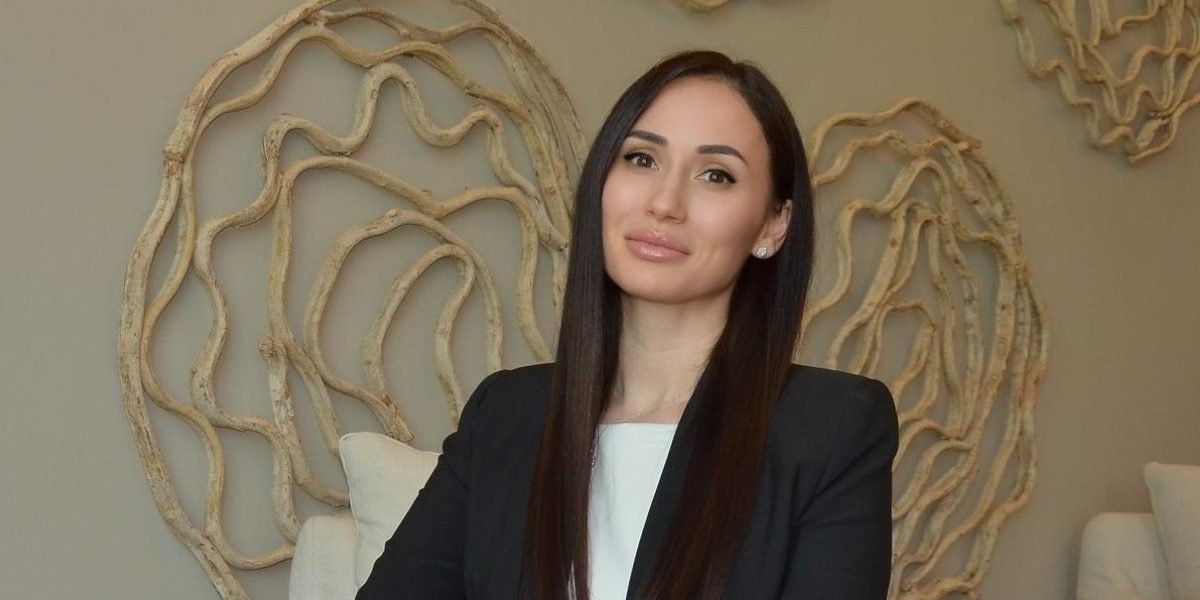By: Susan Perk
In Florida, where the sun brings together a mix of cultures, works Rusana Plonsak — a barber and stylist from Ukraine who brings more than just technical skill to the industry. Her approach is about adaptation, observation, and sensitivity. She confidently works with the most challenging hair types and head shapes, not chasing perfection but creating balance. Behind her fades, clean transitions, and sharp lines lie not just craftsmanship but a philosophy — to truly see the person and honor their individuality.
We spoke with Rusana about her journey, the power of scissors in a world of clippers, immigration, chemistry, and how confidence can return in a barber’s chair.
— Rusana, how does your work begin when a client sits in your chair?
Usually, a man knows exactly what he doesn’t want — uneven fades, highlighting flaws, or a so-called “perfect” haircut that doesn’t suit his head shape. So, my work doesn’t start with the clippers — it starts with observation. I analyze how the hair grows, the shape of the skull, how the client carries himself — and only then do I decide what to do and how to do it.
— You call your approach “adaptive barbering.” What does that mean?
It means taking an individual approach to every client. I adjust the shape, length, and lines to everything — from hair density and growth patterns to past haircut traumas. Sometimes men have even developed psychological discomfort from bad haircut experiences, and that needs to be considered. I don’t just cut hair — I create the feeling that the hair works for the man, highlighting his strengths and masking what he prefers to keep hidden.
— You’re well known for your scissor techniques. Why scissors instead of clippers?
Clippers are standard in the industry — they’re convenient. But there are areas they can’t handle: scars, irregular skull shapes, tricky transitions. That’s where scissors come in. I developed my own technique that allows me to create clean fades even on the most complex areas. It takes time and patience, but the result is always worth it.
— How did you develop this technique?
I started out self-taught: watching videos, taking courses at a barber school. Then came practice, practice, and more practice. One of my mentors once told me: “You won’t grow until you mess up and learn to fix it quickly.” Since then, I haven’t been afraid of mistakes — because I know how to fix them.
— Tell us about your move to the U.S. It wasn’t just a career decision, was it?
Not at all. Moving to the U.S. was a complete restart — I had to begin from scratch. At first, I worked as a receptionist at Boardroom Salon in Texas — and it turned out to be an incredibly valuable experience. I saw how a salon operates from the inside: client service, team dynamics, structure. Later, I moved to Florida and started working as a stylist at SportClips — the atmosphere there is completely different: more energetic, dynamic, and family-oriented.
— You work primarily in men’s grooming, but you’ve started learning women’s haircuts too. How is that?
It’s more challenging, but also exciting. I love exploring new shapes and working with different textures. But honestly, my heart still belongs to fades, sharp lines, and clean transitions. That’s my craft and my passion.
— In addition to cutting hair, you also consult clients on hair care. Why is that important to you?
Because 90% of men buy hair products based on the packaging — and very few actually know what their hair needs. What’s more, many stylists don’t know either. I studied trichology and cosmetic chemistry, so now I look at ingredients, not advertising. I want my clients to understand why a product suits them — that way they’ll use it correctly and actually enjoy it.
— You have a very respectful attitude toward your colleagues. Is that part of your philosophy too?
Absolutely. I don’t believe in competition. We don’t have rivals — we have colleagues. We all learn from each other. Right now, I’m sharing my techniques with three barbers who reached out to me directly. It’s not a course or a promotion — it’s a real exchange of knowledge. I’m grateful to my mentors and happy to pass on what I’ve learned.
— And finally, how would you describe your mission?
My mission is simple. They say beautiful women get away with a bit more, and gentlemen are allowed a bit more. And it truly brings me joy to know that with just a pair of scissors and clippers, I can give a man that little boost of confidence he may have been missing to achieve great things. A haircut isn’t just about appearance. It’s about how you feel — your posture, your voice, your mood. I believe every man deserves to feel his best — and that’s exactly what my role as a barber is about.








